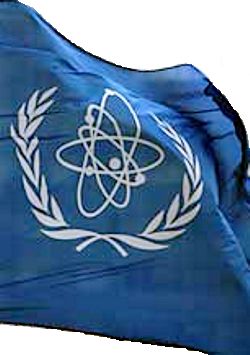> Si teme la catastrofe > «L’incidente nucleare evidenzia l’urgenza assoluta di ricorrere all’energia solare» > Il terremoto del Giappone ed il ruolo dell’uomo nel mondo > Allarme nucleare dopo il terremoto > La sicurezza presunta e l’insicurezza vera > Il no al nucleare del Comitato
Mentre l’Iaea (International Atomic Energy Agency) lancia il suo ultimo aggiornamento sulla situazione della centrale nucleare giapponese, l’Europa lancia i test sulla sicurezza delle sue centrali, la Germania decide di fermare altre sette centrali, mentre, c’è da ricordare, che la precedente giunta di centro sinistra aveva deciso la chiusura di tutte le centrali entro il 2022.
Allontanandoci idealmente dal pianeta non sembrano ridicoli questi uomini divisi fra destra e sinistra che si fanno i dispetti? Anche gli animali, quando operano le loro scelte, scelgono la via più semplice e più economica per le loro energie…
L’Iaea ha segnalato che il vessel, il contenitore e schermo dell’unità 3 dell’impianto nucleare di Fukushima Daiichi, sembra sia lesionato. Dunque i prodotti di fissione stanno o potrebbero uscire al suo esterno. Forse è ancora integro il contenitore primario (l’edificio del reattore). Ma i prodotti radioattivi gassosi (gas nobili radioattivi, iodio-131, cesio-137 ed altri) stanno uscendo all’esterno dell’impianto nucleare.
È stato richiesto ai cittadini di rimanere tappati in casa entro un raggio di 30 km.
Ecco il bollettino Iaea
Japanese Earthquake Update (15 March 14:10 UTC)
International Atomic Energy Agency (IAEA)
The IAEA Incident and Emergency Centre (IEC) continues to monitor the status of the nuclear power plants in Japan that were affected by the devastating earthquake and consequent tsunami.
All units at the Fukushima Daini, Onagawa, and Tokai nuclear power plants are in a safe and stable condition (i.e. cold shutdown).
The IAEA remains concerned over the status of the Fukushima Daiichi nuclear power plant, where sea water injections to cool the reactors in units 1, 2 and 3 are continuing. Attempts to return power to the entire Daiichi site are also continuing.
After explosions at both units 1 and 3, the primary containment vessels of both units are reported to be intact. However, the explosion that occurred at 04:25 UTC on 14 March at the Fukushima Daiichi unit 2 may have affected the integrity of its primary containment vessel. All three explosions were due to an accumulation of hydrogen gas.
A fire at unit 4 occurred on 14 March 23:54 UTC and lasted two hours. The IAEA is seeking clarification on the nature and consequences of the fire.
The IAEA continues to seek details about the status of all workers, reactors and spent fuel at the Fukushima Daiichi plant.
An evacuation of the population from the 20-kilometre zone around Fukushima Daiichi is in effect. The Japanese have advised that people within a 30-km radius shall take shelter indoors. Iodine tablets have been distributed to evacuation centres but no decision has yet been taken on their administration.
A 30-kilometre no-fly zone has been established around the Daiichi plant. Normal civil aviation beyond this zone remains uninterrupted. The Japan Coast Guard established evacuation warnings within 10 kilometres of Fukushima Daiichi and 3 kilometres of Fukushima Daini.
The IAEA and several other UN organizations held a meeting at 11:00 UTC today to discuss recent developments and coordinate activities related to consequences of the earthquake and tsunami. The meeting was called under the framework of the Joint Radiation Emergency Management Plan of the International Organizations, and this group expects to work closely together in the days ahead.
















